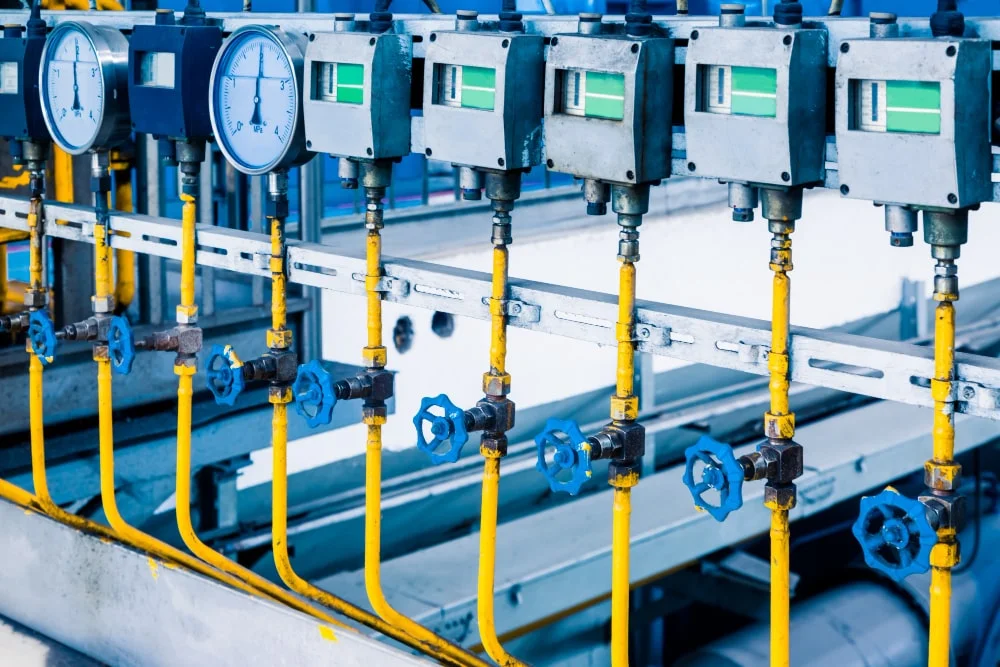In the vast landscape of industrial processes, pumping technology emerges as a vital and often unsung hero, driving the seamless flow of fluids and materials that keep our industries running. From water treatment and chemical handling to oil and gas production, pumping systems play a pivotal role in ensuring the smooth operation of diverse industrial applications.
Understanding the significance of pumping technology is essential for optimizing efficiency, reducing downtime and achieving sustainable practices in various sectors. Discover how the right pumping solutions can revolutionize industrial processes, elevating productivity and paving the way for a more efficient and sustainable future.
Understanding Pumping Technology
Pumping technology refers to the application of mechanical devices to transfer fluids, gases or even solids from one location to another within various industrial processes. These pumps play a crucial role in maintaining the desired flow rates and pressures required for different applications, ensuring the smooth movement of substances across the production and distribution chain.
Whether it’s pumping water in a municipal water treatment plant, transferring chemicals in a manufacturing facility, or extracting oil in the petroleum industry, pumping technology forms the backbone of numerous industrial operations, contributing to the efficiency and productivity of diverse sectors.
Types of Pumps Used in Different Industries
Centrifugal Pumps
Centrifugal pumps are widely used in industries due to their ability to handle large flow rates efficiently. They work by converting the mechanical energy from a rotating impeller into kinetic energy, propelling the fluid outward and creating pressure, enabling the transfer of liquids or gases. These pumps are commonly found in water supply systems, wastewater treatment plants, heating, ventilation and air conditioning (HVAC) systems.
Positive Displacement Pumps
Positive displacement pumps work by trapping a specific volume of fluid and then forcing it through the pump’s discharge outlet. These pumps deliver a constant flow rate regardless of changes in system pressure. They are ideal for applications that require precise dosing, such as in pharmaceutical manufacturing, food processing and oil and gas production.
Some examples of positive displacement pumps are Diaphragm Pumps (utilizing a flexible diaphragm to move fluids through the pump chamber), Gear Pumps (using gears to transfer fluids by displacing them between the gears’ teeth and the pump housing) and Peristaltic Pumps (squeezing a flexible tube or hose with rollers, creating a series of low-pressure voids that draw fluid into the pump and then expel it)
Factors Influencing Pump Selection
Flow Rate Requirements
One of the primary considerations in pump selection is the desired flow rate, which is the volume of fluid to be transferred per unit of time. Understanding the flow rate requirements is crucial as it determines the size and capacity of the pump needed to meet the specific application’s demands.
Pressure and Head Considerations
The pressure and head requirements in the system are critical factors in pump selection. Pressure refers to the force needed to move the fluid against resistance, while head represents the vertical distance that the pump must lift the fluid. Pump selection must take into account these parameters to ensure that the chosen pump can deliver the required pressure and head to meet the application’s needs.
Chemical Compatibility
In industries where aggressive or corrosive fluids are handled, the chemical compatibility of the pump materials with the fluid being pumped is of utmost importance. It is essential to choose materials that can withstand the chemical properties of the fluid to prevent corrosion, leakage or damage to the pump.
Temperature and Viscosity
The temperature and viscosity of the fluid being pumped play a significant role in pump selection. High temperatures can affect the pump’s performance and materials, while highly viscous fluids require pumps designed to handle thicker substances effectively.
System Efficiency and Energy Consumption
Efficiency is a critical consideration in pump selection as it directly impacts energy consumption and operational costs. Choosing a pump with high efficiency ensures that the system operates optimally, reducing energy wastage and minimizing operating expenses.
Maintenance and Reliability
Selecting a pump with ease of maintenance and high reliability is essential to reduce downtime and maintenance costs. Pumps that require minimal maintenance and offer long-lasting performance contribute to the overall efficiency and productivity of the industrial process.
Solutions in Pumping Technology
A. Cavitation and Pump Efficiency
To mitigate cavitation and improve pump efficiency, several solutions can be implemented. The use of specially designed impellers and diffusers helps reduce pressure fluctuations, minimizing cavitation risk. Additionally, employing variable frequency drives (VFDs) allows for precise control of pump speed, preventing overloading and maintaining stable flow conditions.
B. Handling Abrasive and Corrosive Fluids
Dealing with abrasive and corrosive fluids requires robust solutions. Selecting pumps constructed with wear-resistant materials, such as hardened alloys or ceramics, enhances durability and extends pump life. Moreover, utilizing double mechanical seals and barrier fluid systems isolates sensitive pump components from abrasive or corrosive fluids, which reduces maintenance needs.
C. Environmental and Regulatory Compliance
To meet environmental and regulatory requirements, pumps can be equipped with advanced sealing systems and containment features. These measures prevent fluid leaks and spills, reducing the risk of environmental contamination. Employing pumps with low emission levels and adhering to industry standards ensures compliance with environmental regulations, safeguarding the environment and supporting sustainable practices.
D. Pump Maintenance and Lifecycle Costs
Regular maintenance schedules, coupled with condition monitoring technologies, allow for early detection of potential issues, preventing costly breakdowns and downtime. Opting for pumps with user-friendly maintenance features, easy access to critical components, and standardized spare parts simplifies maintenance procedures and reduces overall lifecycle costs.
Future Trends in Pumping Technology
A. Industry 4.0 and Digitalization in Pumping Systems
Future pumping systems will embrace Industry 4.0 concepts, utilizing advanced sensors, IoT connectivity, and data analytics for real-time monitoring and predictive maintenance. Smart pumps will optimize energy efficiency and enable remote control for improved performance.
B. Integration with Renewable Energy Sources
To promote sustainability, pumps will increasingly be integrated with renewable energy sources such as solar and wind power. This move will reduce reliance on traditional energy and lower carbon footprints, ensuring greener operations.
C. Nanotechnology and Miniaturization in Pump Design
Nanotechnology will drive the miniaturization of pumps, leading to more precise fluid handling and applications in medical devices, microfluidics and portable systems. Smaller and efficient pumps will offer space-saving and cost-effective solutions.
Pumping technology plays a crucial role in various industrial processes, enabling the efficient movement of fluids and ensuring smooth operations. Selecting the right pump tailored to specific applications is essential for optimizing performance, reducing energy consumption and minimizing maintenance costs.
For reliable and high-quality industrial pumps, Iwaki America stands out as a leading provider, offering innovative solutions to meet diverse industry needs. With Iwaki America’s expertise and commitment to excellence, businesses can enhance productivity and achieve greater efficiency in their operations.


Videos